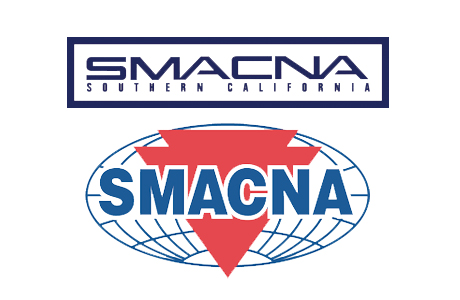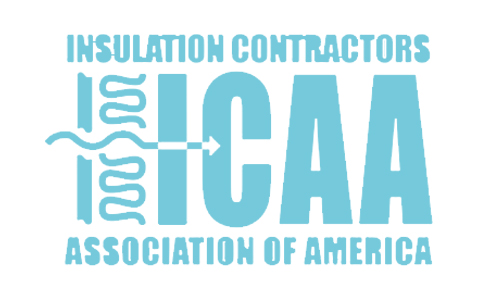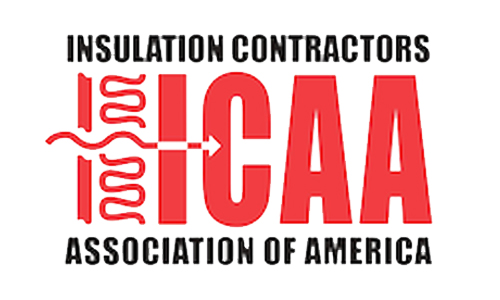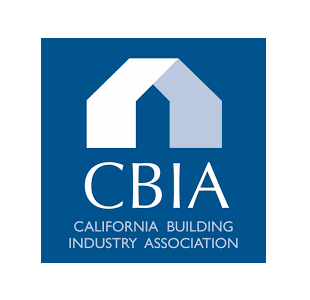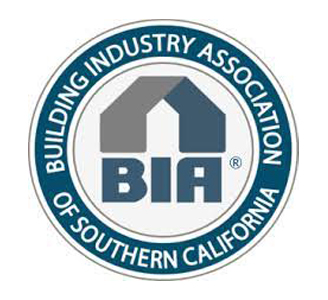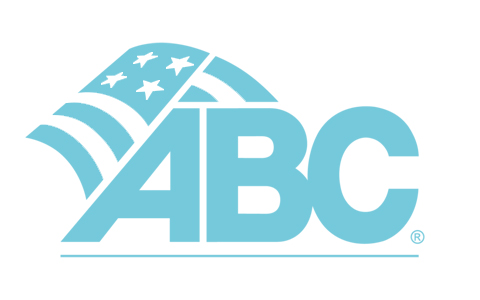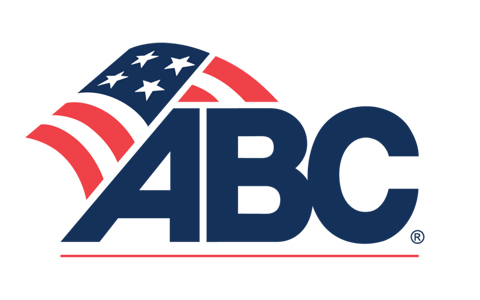[what you don’t know can and will be used against you].
I. Introduction
This article will review several key contract clauses used in construction contracts. These clauses are the most frequently litigated. Consequently, it is imperative that you understand the effects of these clauses before entering into any contract.
The essential elements of any contract are 1) identity of the parties; 2) description of the work; 3) time of performance; 4) contract price; and 5) payment. Each of these elements should be clearly identified and spelled out in the contract. Otherwise, you are at risk of having these terms determined by a disinterested and uninvolved party sometime in the future with potential disastrous results.
II. Key Clauses in the Contractual Relationship
One of the great “risk allocators” in the construction industry is the no damage for delay clause. The contractor in bidding the project must carefully examine the contract documents to determine whether or not there is in fact a no damage for delay clause contained therein. If there is one, the contractor must bid the contract with knowledge that such a clause exists and it will have the burden of proof to get around the no damage for delay clause.
Customarily, this provision provides that while the contractor or subcontractor is not entitled to a claim for delay damages, it will be entitled to an extension of time. Many times the contract will provide that the contractor is entitled to no damage for delay, but, on the other hand, the owner or contractor is entitled to liquidated damages for any delay caused by the contractor or subcontractor.
Public Contract Code Section 7102 states
“Contract provisions in construction contracts of public agencies and subcontractors thereunder which limit the contractee’s liability to an extension of time for delay for which the contractee is responsible and which delay is unreasonable under the circumstances involved, and not within the contemplation of the parties, shall not be construed to preclude the recovery of damages by the contractor or subcontractor . . . This section shall not be construed to void any provision in a construction contract which requires notice of delays and provides for arbitration for other procedures for settlement or provides for liquidated damages.”
Thus, in public works contracts, a no damage for delay clause will not be enforced if the contractor can show that the delay was unreasonable under the circumstances involved and not within the contemplation of the parties.
The no damage for delay clause is one of the most hotly contested clauses in the construction industry. In some cases, the clause is enforced and in others, it is not. It really depends on the factual circumstances under which the issues arise.
In determining whether or not a no damage for delay clause will be enforced, the court has held that the following factors need to be considered:
- the terms of the particular provision;
- the nature of the default;
- various other circumstances of the particular
The general rule that has arisen around the United States with regard to the no damage for delay clause is that the clause will be enforced unless:
- the delay was so long in duration or was of such a nature that it can be said that it was not within the contemplation of the parties when the contract was entered into;
- the delay was the result of the owner's act of interference with the contractor;
- the delay was caused by an act of bad faith by the owner;
- In one case where the court concluded that even though the owner actively interfered with a contractor's activities there was no deliberate intent to delay and therefore the court upheld the no damage for delay clause.
- In another case the court found that the risk was agreed to by the contractor when he accepted the contract and upheld the no damage for delay
- In another case the court found that a two-year delay was not uncommon in highway construction and upheld the no damage for delay clause.
The 1997 AIA 201 General Conditions has added a provision for mutual waiver of consequential damages at Section 4.3.10 which states:
"Claims for Consequential Damages". The contractor and owner waive all claims against each other for all consequential damages arising out of or relating to the contract.
This mutual waiver includes:
1) damages incurred by the owner for rental expenses for loss of use, income, profit, financing, business and reputation, and for loss of management or employee productivity or of the services of such persons; and
2) damages incurred by the contractor for principal office expenses including the compensation of personnel stationed there, for losses of financing, business and reputation, and for loss of profit other than anticipated profits arising directly from the work.
This mutual waiver is applicable, without limitation, to all consequential damages due to either party's termination and deemed not to preclude an award of liquidated direct damages, when applicable, in accordance with the requirements of the contract documents.
Under California law, liquidated damage clauses are presumptively valid. (See Civil Code Section 1671 and Public Contract Code Section 10226.) Essentially, the party seeking to invalidate a liquidated damage clause must demonstrate ". . . that the provision was unreasonable under the circumstances existing at the time the contract was made."
Another frequently litigated issue concerning liquidated damage clauses concerns the situation where an owner assesses liquidated damages when it is partly at fault for the delay in the project completion date. Under California law, if the facts demonstrate that the period of delay was concurrently caused by the owner and contractor, courts will not enforce the liquidated damage assessment. On the other hand, if the contractor and owner each caused separate delays, the courts will apportion the delay attributable to the contractor and partly enforce the liquidated damage clause.
In general, owners are responsible to contractors for errors and omissions in the construction plans and specifications. As a result, owners frequently seek to insert exculpatory clauses in contracts shifting the risk of defects in the plans and specifications onto contractors. In general, the exculpatory clause to be enforceable must be sufficiently specific so as to put the contractor on notice that he or she should not under any circumstances rely on the accuracy of the plans and specifications to prepare an estimate for the cost of the work to be performed.
Many contracts provide that the contractor must inform the owner and seek correction of or clarification of any document deficiencies such as errors, omissions or inconsistencies and to do so prior to proceeding with the work. In the event that the contractor then proceeds recognizing such error, inconsistency or omission and fails to report it to the owner or architect, the contractor will then be responsible should the installation prove defective.
Contractors and subcontractors should be aware of contract provisions that in essence attempt to make them "guarantors" of the plans. The following are some examples of attempts on the part of the owner to shift the responsibility for errors and omissions to the contractor. If a contractor finds such a clause in the contract documents, it must carefully evaluate the impact and whether or not the contractor wants to bid on the project. An owner must likewise take into account whether or not clauses such as the following might impact the bids to be received on the project. Some examples of these clauses are as follows:
1. Simple:
"The contractor represents and warrants that the description of work, plans, drawings and specifications are completed and that the contract price herein set forth is adequate to provide all the necessary labor, service, equipment or material to complete the work in accordance with said plans and specifications."
2. More Elaborate:
"Contractor represents and warrants that in setting the Guaranteed Maximum Price herein, that it has done so after a thorough review of the plans and specifications and does hereby represent and warrant that said plans and specifications are sufficiently complete to enable the contractor to establish the Guaranteed Maximum Price set forth herein. Contractor acknowledges that the contract for construction is a Guaranteed Maximum Price contract and that except for adjustments in the Guaranteed Maximum Price by change orders, the contractor shall build the project in conformance to the contract documents and the owner shall in no event be chargeable for more than the Guaranteed Maximum Price. The contractor acknowledges, represents and warrants that the plans, drawings and specifications are completed, coordinated and in sufficient form for the contractor to issue an accurate Guaranteed Maximum Price and sufficient to enable the Contractor to complete the work within the contract time set forth in this contract."
This subparagraph is probably the single most controversial subparagraph contained in any of the new AIA 1997 edition documents. According to the proponents of this new subparagraph, the language of the subparagraph is designed to recognize existing construction practices for trade contractors to effectively provide design build work in the context of a traditional construction contract. These trade contractors include those responsible for curtain wall systems, fire suppression systems, instrumentation and control systems and other elements which typically are not specified with any degree of detail in the Contract Documents. The old 3.12.11 in the 1987 edition was rather vague and simply stated that the architect was entitled to rely on the accuracy and completeness of certificates required to be issued by the Contract Documents.
Subparagraph 3.12.10 contains several important provisions. This subparagraph begins by specifically stating that the contractor is not required to practice architecture or engineering unless (1) the services are "specifically required" by the contract documents, or unless (2) the contractor needs to provide such services in order to carry out the contractor's responsibilities for construction means, methods, techniques, sequences and procedures." This particular provision (2) is likely to cause much litigation.
Subparagraph 3.12.10 goes on to specify that the contractor " shall not be required to provide professional services in violation of applicable law". The subparagraph then goes on to provide that if architectural or engineering services are required by the Contract Documents, the owner and architect must then specify "all performance and design criteria" that the architectural or engineering services must satisfy. If this information is provided, then the contractor must make sure that the design services he is required to provide are performed by properly licensed design professionals who sign and seal all submittals required by the Contract Documents.
This subparagraph further provides that the owner and architect are entitled to rely on the completeness and accuracy of the design services provided by the contractor where the owner and architect have specified all performance and design criteria that the contractor's design professionals must satisfy. Further, the architect's role in the review and approval of these design submittals is expressly limited for the purpose of checking for conformance with "information given and the design concept expressed in the Contract Documents". Lastly, subparagraph 3.12.10 provides that "the contractor shall not be responsible for the accuracy of the performance or design criteria required by the Contract Documents.
Arguably, there are several problems with this subparagraph. The first problem noted above with regard to what appears to be the shifting of design responsibility from the architect to difficulties in interpretation during the project. This will ultimately result in scope of work and as to who, between the architect and the contractor, is ultimately responsible for professional design services provided by the contractor.
Based on the language of this subparagraph, if a dispute arises over design services provided through a contractor, the contractor will undoubtedly argue that his design professional's work product is not in error but rather that there is a problem with the "adequacy of the performance or design criteria" specified by the architect in the Contract Documents. On the other hand, the architect, and the owner for that matter, will argue that there is nothing wrong with the design and performance criteria but rather the actual implementation of the design and performance criteria provided by the contractor's design professional is the cause of the problem.
Ultimately, contractors faced with this provision will need to update their insurance coverage and carefully scrutinize contractual responsibilities with those design professionals they hire to perform design work pursuant to subparagraph 3.12.10. Moreover, contractors and subcontractors preparing bids for contracts using this design shifting subparagraph will have to carefully scrutinize the contract documents to determine if design professionals are needed to help the contractor perform the contractor's means, methods, techniques, sequences and procedures" as specified the Contract Documents.
Termination for Convenience.
Like a suspension of work clause, there may be instances where the owner will want to terminate the contract for convenience. These clauses generally provide that the owner may at any time and for any reason terminate the contractor's services and work at the owner's convenience.
Upon receipt of such notice, the contractor shall, unless the notice directs otherwise, immediately discontinue the work and placing of orders for materials, facilities and supplies in connection with the performance of the Agreement, and, if requested, shall make every effort to procure cancellation of all existing orders or contracts upon terms satisfactory to the owner or at the option of the owner, give the owner the right to assume those obligations directly, including all benefits to be derived therefrom.
The clauses will then set forth the amount of payment the contractor is entitled to receive.
It is important that contractors closely scrutinize this clause as it will be enforced by a court of law. It is important to understand that in many situations should an owner or contractor terminate a contract for cause which is not upheld by a court of law, the court will uphold the termination as one for convenience, limiting the damages of the terminated contractor to those set forth in the termination for convenience clause.
One of the big disputes that often arises in a construction project is whether or not the contractor has to continue working when a dispute arises during the progress of the job. From an owner's standpoint, the owner will want to have a clause in the contract documents obligating the contractor to continue working notwithstanding the existence of disputes. The agreement to continue work after a dispute has arisen and not stop work is an absolute prescription for bankruptcy unless you can afford to finance the entire project without a progress payment.
From a contractor's point of view, a contractor will want a clause that gives it the right to stop work in the event of nonpayment.
The right to stop work on private works has been addressed by the California legislature by enacting Civil Code Section 3260.2, which allows the original contractor to stop work for nonpayment by serving the owner with a 10-day stop work order, and subsequently stopping work if all the posting and notice requirements are met.
All contractors and subcontractors are aware of the fact that they are usually required by the Contract Documents to examine the job site conditions prior to bid and most do so. In the area of "changed conditions" an owner may or may not allocate the risk of "differing site conditions" also known as "changed conditions" to the contractor.
There are two types of changed conditions:
1. A Type 1 differing site condition is a subsurface or related physical condition at the site which differs materially from those indicated in the Contract Documents.
2. A Type 2 differing site condition is an unknown physical condition at the site of an unusual nature differing materially from those ordinarily encountered and generally recognized as inherent in the work of the character provided for in the contract.
If the contractor encounters a Type 1 changed condition, the contractor must prove that the conditions that the contractor encountered on the project differed materially from the conditions indicated in the Contract Documents.
If the contractor encounters a Type 2 changed condition, then the contractor must prove the following:
1. That the contractor has encountered an unknown physical condition at the site;
2. That unknown physical condition must be of an unusual nature;
3. That unknown physical condition must differ materially from those that are ordinarily encountered; and
4. That unknown physical condition of an unusual nature must differ materially from the conditions normally encountered in the type of work being performed by the contractor.
This provision incorporates the General Contractor's agreement with the owner by reference into the agreement between the General Contractor and the Subcontractor, thereby binding the Subcontractor to any Contract Documents which relate in any way, directly or indirectly, to the work covered by the agreement in the same manner and to the same extent as the Contractor is bound to the Owner under the contract terms.
Many contracts provide that the architect is the judge, jury and executioner with regards to any dispute between the owner, contractor and subcontractor. This is particularly true with the new AIA contract.
It is important that a contractor provide in its standard subcontract agreement that whatever dispute resolution procedure it has in the prime contract documents between itself and the owner will likewise be applicable to the disputes between the contractor and the subcontractor.
It is important to specifically spell out the type of dispute resolution procedure to be utilized.
1. MEDIATION
Mediation is a non-binding procedure which the owner or contractor may require as a prerequisite to filing the arbitration or lawsuit.
2. ARBITRATION
Arbitration is binding upon the parties and will, with few exceptions, be confirmed by a court of law. It is important to expressly include any requirements for selecting the arbitrator and whether or not discovery will be allowed, and if so, specifically identifying the type of discovery.
To recover attorney fees in any litigation, California law requires that a written contract which provides for recovery of attorney fees be entered into between the parties. If an attorney's fee provision is not contained within the contract, neither party to the litigation can recover them.
Indemnity agreements are regularly used to allocate risk between parties on construction projects. However, the question often arises as to whether or not the indemnity agreement is sufficient to require indemnity in situations where the indemnifying party is without fault. This issue was recently addressed in three California court of appeal cases. Despite substantially similar language in each of the agreements, the cases reached different outcomes. In two cases, the courts held that the agreements required indemnification even though the subcontractors were not at fault. In the other case, the court ruled that the language of the agreement was not explicit enough to require indemnification without a finding of fault. The message is clear. The parties should take care to ensure that the language in their indemnity agreements properly states the scope of indemnification intended.
There are three basic types of indemnity provisions. These are known as: 1) broad form; 2) intermediate form; and 3) limited form. Examples:
1. Broad Form Indemnity Clause.
To the fullest extent permitted by law, the subcontractor shall indemnify, defend, save and hold the owner, the contractor and architect, the respective partners, officers, employees and anyone else acting for or on behalf of any of them (hereinafter collectively called indemnitees) harmless from and against all liability, damage, loss, claims, demands and actions of any nature whatsoever which arise out of or are connected with, or are claimed to arise out of or be connected with:
1) the performance of subcontractor's work;
2) any accident or occurrence which is alleged to have happened in or about the place where such work is being performed or in the vicinity thereof; or
3) while any of the subcontractor=s property, equipment or personnel are in or about such place or vicinity, whether or not such liability, damage, loss, claim, demand or action was caused in part or in whole by the active or passive negligence or other fault of the party indemnified hereunder.
2. Intermediate Form Indemnity Clause.
To the full extent permitted by law, subcontractor agrees to indemnify and hold harmless, contractor and owner from and against any claim, cost, expense or liability (including attorney=s fees), attributable to bodily injury, sickness, disease or death, or damage to property caused by, arising out of, resulting from, or occurring in connection with the performance of the work by subcontractor, its subcontractors and suppliers, or their agents, servants, or employees, whether or not caused in part by the active or passive negligence or fault of the party indemnified hereunder.
3. Limited Form Indemnity Clause.
Contractor and subcontractor each agree to indemnify the other for the direct cost of losses due to bodily injuries (including death) and property damage to the extent caused by indemnitor during the performance of its work on the project. In no event shall this agreement be affected by any insurance certificate provided by the parties and neither party shall be liable to the other for any consequential or indirect damages.
Retention, contrary to popular belief, should not be the owner's contingent financing to complete the project, nor the General Contractor's bargaining tool to negotiate a settlement on other projects which it is with the Subcontractor. The traditional "ten per cent retention" which is claimed by most Contractors and Owners to be the "industry standard" is a myth and should be negotiated on every contract.
The Public Contracts Code limits retainage between general contractor and sub to amount between owner and prime contractor.
The new Business and Professions Code Section 7108.5 provides that a prime contractor must pay the subcontractor within ten days of payment by the owner, unless otherwise waived. The penalty for non-compliance is two per cent per month plus court costs and attorney fees.
Although the foregoing list of contract clauses is not all-inclusive, it does attempt to set out those areas which have proven to be most troublesome.
This article is intended to provide the reader with general information regarding current legal issues. It is not to be construed as specific legal advice or as a substitute for the need to seek competent legal advice on specific legal matters.






